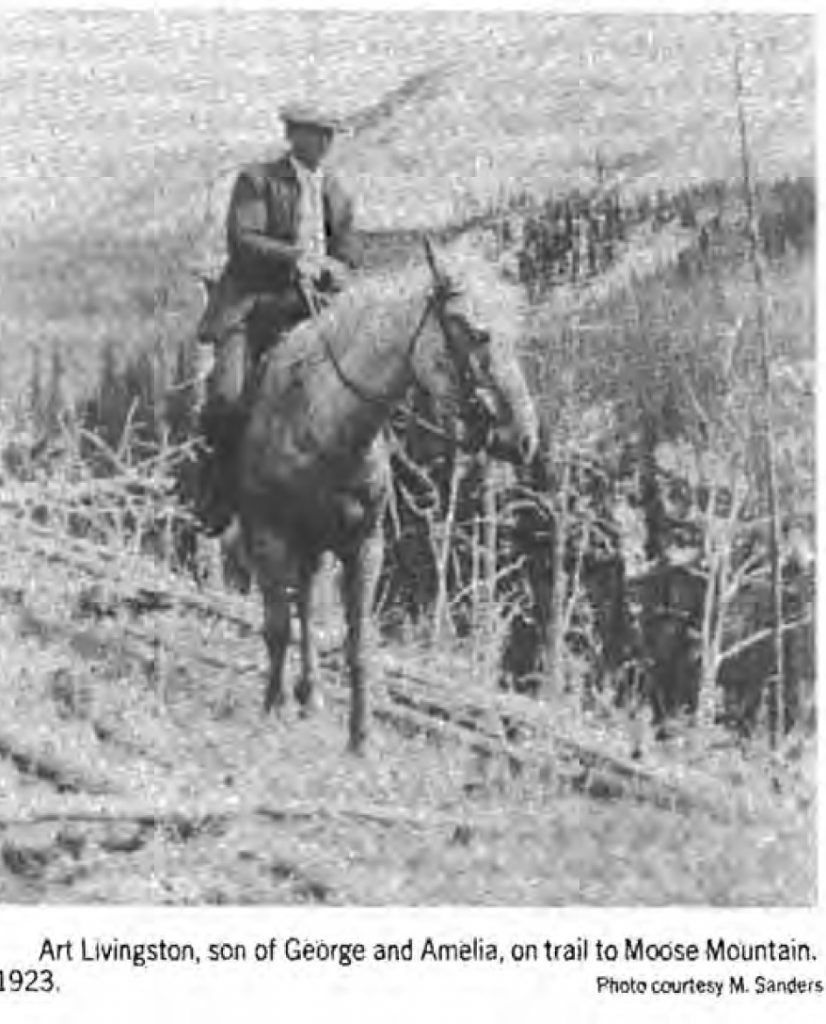One of Bragg Creek’s earliest known settlers was George Livingston. George was the eldest son of the well-known Alberta pioneer Sam Livingston, who had come from Ireland for the gold rushes (California in 1847 and the Cariboo in the 1850s). By 1874, Sam and his Metis wife Jane Howse, eventually moved to the Calgary area and operated a buffalo hide business on the Elbow River near the Roman Catholic mission, Our Lady of Peace. This is how son George was introduced to the Bragg Creek area. They later moved to farm at the current location of the Glenmore Reservoir. (Their family house stands at Heritage Park.)
Sam claimed squatter’s rights there in 1876 and went on to prosper as one of the area’s first farmers. He is credited for pioneering agricultural development in the west by bringing in the first threshing machine and binder and developed a rudimentary irrigation system. Sam also raised cattle and sold fresh meat to the North West Mounted Police at Fort Calgary. In 1885, with neighbouring farmer John Glenn, Livingston founded the Alberta Settlers Rights Association. As a result, he and other “squatters” were eventually granted ownership for their land claims.

Son George began working for the Canadian Pacific Railway (CPR), but sorely missed the days of his youth grazing Sam’s cattle in the Bragg Creek valley. So, beginning in 1913, he built a log shack on a quarter section in West Bragg (SE ¼ 16-23-5W5) patenting it in 1918. Eventually he and his son Art would operate the Livingston ranch with a second quarter section (SW ¼ 15-23-5W5) and leased land. The quarters sit on what we know now as Saddle & Sirloin Ranch. While still living in Bragg Creek, Art began travelling to California to work on movies, including The Four Horsemen of the Apocalypse (1921) starring Rudolph Valentino. He eventually sold the ranch in 1929.
A man named Turnbull also lived in the area for a short time, just north of the Livingston property. Apparently, he drove cattle herds through the territory and forded the Elbow River approximately where the Round Hall is located today. Hence, some historians claim that Bragg Creek had once been informally called “Turnbull’s Crossing.” We do know that a small creek that enters Bragg Creek in Saddle & Sirloin was once named Turnbull’s Creek because it’s recorded that Livingston named it so. However, the actual location of the crossing is unclear, and the name Bragg stuck instead.
Photo Credits:
“The [George] Livingston ranch house” 1922, [A14641], photographer Jack Edworthy. Glenbow Archives, University of Calgary.
“Art Livingston, 1923”, photo courtesy of M. Sanders, Our Foothills; Bragg Creek: Friesen 1975, page 453.

